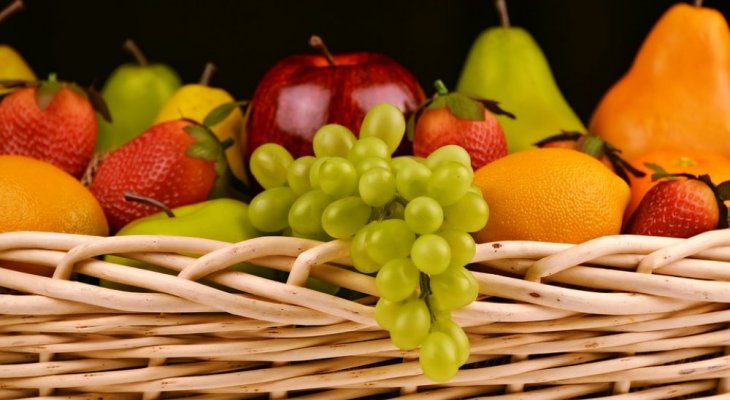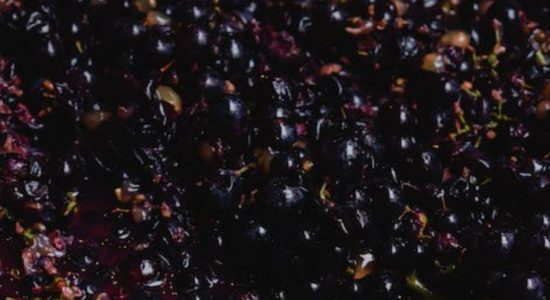Can Fruit Ferment In The Fridge? » (Get The Answers Here!)

As you may probably know, fruit can naturally ferment under the right conditions.
Recently I have been wondering whether or not fruit in the fridge can ferment whether it is homemade fermented fruit, regular fresh fruit or even an old jam.
Can Fruit Ferment In The Fridge? Fruit can ferment on its own in the fridge in certain cases. The presence of yeast in the air and the sugar content of the fruit can create a fermentation process right in your own fridge. This has been seen happening to fresh fruit as well as jam and other conserved fruits.
There are different things to consider when deciding whether or not fruit can be fermented in the fridge
Read on as I explain how fermentation for fruit works and how different types of fruit fermentation may occur in the fridge.
Read Also: 9 Best Wine Enthusiast Wine Fridges
So, Can Fruit Ferment In The Fridge?
Fruit can naturally ferment on its own and this sometimes occurs on accident with fruit products stored in the fridge.
There are various degrees of this happening. Some people have experienced jam fermenting, giving it quite potent alcohol levels, while other single pieces of fresh fruit might ferment but have a low alcohol level.
What makes fruit ferment?
Before we dive into why fruits ferment in the fridge, it is good to know why fruit can ferment at all.
As you might know as a homebrewer or alcohol enthusiast, alcoholic fermentation basically happens when you add sugar to yeast. The yeast consumes the sugar and leaves ethanol(alcohol) and carbon dioxide. This is what makes alcohol we use for consumption.
The same thing applies to fruit fermentation. The difference is that most, if not all fruits, can do this process on their own.
Fruits have a high natural sugar content as well as natural wild yeast attached to them.
The reason fruits ferment so well is simply because they have all the necessary conditions in a “package deal”.
The natural wild yeast on especially grapes, for example, is perfect for fermenting.
This is the reason why grapes are the usual ingredient when making wine, simply because it creates a natural fermentation process when you mash it and keep it in an airtight container.
Fruits fermenting in the fridge on their own is quite rare but can happen.
It is generally pretty rare for fruit products to ferment in the fridge. For fresh fruit it can happen if, for example, you had a pack of grapes outside the fridge, a few of them got smashed in the container and you place them back in the fridge
This could spark a fermentation process since yeast from the grapes and yeast in the air outside the fridge may have latched onto the sugar of the mashed grapes and start fermenting.
Don’t expect to get drunk from fermenting fruits in the fridge.
While the example above can happen, the alcohol content in a few mashed grapes is extremely low. When making wine, for example, hundreds of grapes are used per bottle, so eating a few fermenting grapes from your fridge probably won’t give you any type of buzz.
Fermenting in the fridge is often used when making homemade jams, chutneys or even wines and ciders. For the latter, the fermenting is usually the secondary fermenting after the wine or cider has been bottled.
Check out our guide to home fruit fermenting in this post
So to conclude, fruit can ferment in the fridge but if you are aiming to make alcohol, you probably shouldn’t place your fermenting fruits in the fridge before you have at least bottled them.
If you happen to stumble upon an old jam that gives off a quite pungent alcoholic smell when you open it, it can actually be quite delicate to eat or drink, so don’t hesitate to give it a try.
NOTE: make sure there is no mold on the jam or jelly before consuming
Types of Fruit Fermentation
When fermenting fruit, the process takes you through three main steps.
- Lactic Acid Fermentation. This is the first step of the fermentation and is what is used to make non-alcoholic jams or chutneys. If you want to achieve this without giving it alcohol content, you have to monitor your fruit fermentation closely. Typically adding vegetables or other natural absorbents will lower the sugar content and refrain your fruit from turning alcoholic
- Alcohol Fermentation. If you leave your fruit fermenting for a while it will naturally create alcoholic properties due to the yeast and sugar reacting to each other. This is essentially how wine and some ciders are made, by simply letting the fruit naturally ferment.
- Vinegar Fermentation. The vinegar state is what happens if you keep fermenting after alcohol fermentation when this happens acetic acid is formed to make stuff like apple cider and vinegar products.
5-Step Guide to Correct Fermenting Conditions
When talking alcohol fermentation, there is some pretty set in stone conditions necessary for the best results.
Fermentation for making all types of alcohol has the same general steps in terms of the actual process since fermentation is basically just yeast and sugar reacting to one another to make alcohol.
Here are 5 key factors to consider while fermenting.
- Temperature. The tricky part about fermenting is the temperature. Too high temperatures will kill the yeast fungi and ruin your process. Too low temperatures will make their activity quite low or stop it entirely. The goal generally is to aim for a temperature that gives you a good alcoholic percentage while doing the process as fast as possible. The higher your temperature the faster your fermentation will complete, but the lower your alcohol percentages will be. The recommended temperature is a minimum of 78F and should never go past 90F.
- Right proportions. To give your fermentation the right conditions, make sure you proportion your sugar and water correctly. A good rule of thumb for sugar to water ratio is 2 pounds of sugar to 1 gallon of water.
- Yeast. The amount of yeast depends on what type of yeast you are using. If using natural yeast in the form of fruits you don’t have to add any extra yeast. The usual amount is 1 cup of yeast per 5 gallons of water. Depending on what you are trying to make, research what other people’s experiences are and find a good balance of added yeast when fermenting.
- Making Vinegar. If your goal is to make vinegar-based products, you should expose your wine or mash to oxygen, this creates a growth of fungi that will create vinegar.
- Time. This is one of the general key rules about homebrewing and goes for fermentation in general too. Time and patience are necessary for fermentation to be completed correctly. Once again depending on what you are making, fermentation can take anywhere from a few days to several months.
Keeping these things in mind is more or less necessary when experimenting with fermentation processes.
It is a key factor to know how different fermentation processes work when homebrewing beer, wine or spirits.
Usually, it is very straight forward, especially if you are working with a recipe. Make sure you keep an eye on the suggested temperatures, proportions, etc. of whatever recipe you may be using.
Read Also: Wine Making Kits For Beginners







